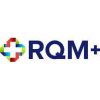The mergers and acquisitions process is long, complex and requires the due diligence of many stakeholders. Once the deal has closed, the team can breathe a brief sigh of relief, for there is still a lot of important work to be done.
Last week MedTech Intelligence held its MedTech Mergers & Acquisitions Regulatory & Quality Due Diligence Conference in Washington, D.C. The event was led by industry experts who have been through the process, and they provided insight on all stages of a typical M&A, including the unique challenges companies will face, due diligence in quality, regulatory, clinical and medical; budgeting and planning; integration and remediation; and the deal breakers.
Post-close activities are just as important as the due diligence that is conducted during the period leading up to acquisition. Many issues can be uncovered after close, so it’s critical for the acquisition team to look for the positives and negatives, communicate clearly with employees, and prioritize activities accordingly. Tony Blank, president of Infinity Biomedical Group, gave attendees a step-by-step guide to the most important post-close considerations.
One of Blank’s first words of advice was to get rid of silos. “You need to be able to move the work [people] around to fulfill your resources,” he said. Some other key issues to look out for post-close include missing data, unopened communications from regulators, messy regulatory, clinical and QA files, and…nepotism.
When prioritizing activities, above all, how does any activity impact patient safety? “That should always be the stopping point,” said Blank. Such activities to look at include halting inappropriate trials, and looking into any lingering open field incidents or field actions. After addressing issues that can affect patients, focus on anything that has an impact on compliance. Is there a misrepresentation of data in regulatory filings? What are the remediation plans? Make plans to close open audit findings. Develop plans for making any updates to facility registrations (including global registrations and any required labeling changes) and assess the impact to potential facility changes.
Assessing staff is a crucial part of the employee integration process. “What is the compensation of the hired staff? Consider standardizing [compensation],” said Blank, adding that employees in their 20s are much more open about discussing their compensation with each other—and this can pose an issue. In addition, this is a good opportunity to review both the capabilities of the staff you are acquiring as well as that of your own staff. Don’t forget to review the agreements made with contractors, consultants and any temporary employees as well.
“The organization itself is going to have to deal with communication issues post close—whether it’s communication to customers, suppliers, regulators, or staff, you need to be very open with your entire staff, distributors, shareholders, press, etc.,” said Blank. “You really should have a communication strategy for all stakeholders.” Clear interaction with employees is a multi-layered process. “When it comes to engaging your employees, you want to have this objective of stability,” said Blank. “When people go to work, that’s one of the things that they’re looking for…knowing their job’s there tomorrow.” When trying to achieve an environment of stability, create a sense of enthusiasm for the change that is happening, communicate any areas for growth (including revenue growth), and make sure the staff understands the responsibility they have in the success of the combined company.
Take the time to lock in key staff as well, because they may have other job opportunities in front of them, and if they feel unstable, there’s a greater chance they may leave.
Communication with both sides—the incoming employees and the existing employees—must be balanced. When integrating the teams, look for areas of common interests, where synergies exists and where duplicative work can be eliminated.
Other areas that Blank touched on included looking for opportunities to create a more efficient organization and identifying key performance indicators; and taking a risk-based approach to integrating processes. “As best practice—always, always, always perform with integrity, be honest and these things [issues that arise during post-close] resolve,” said Blank.







